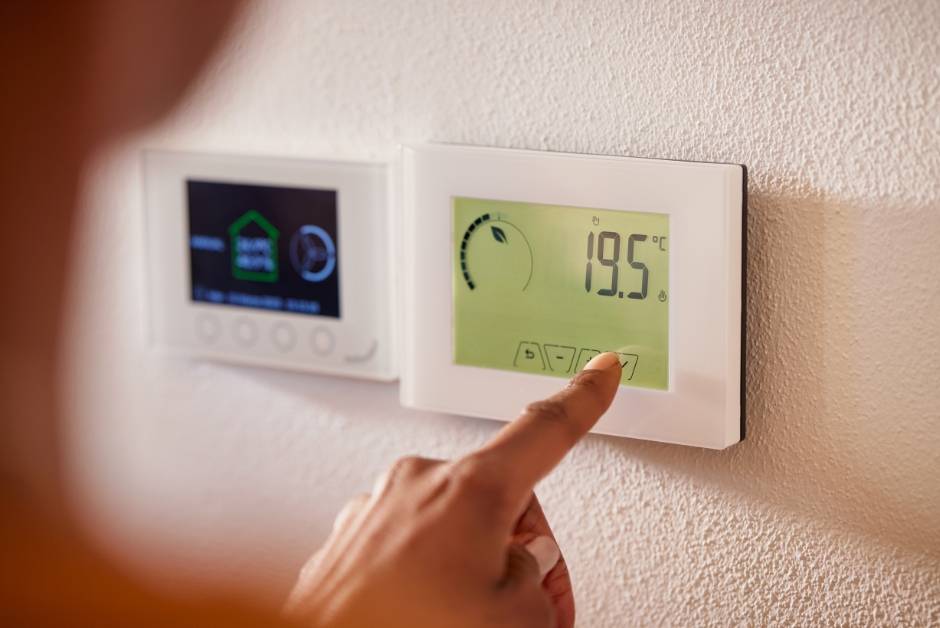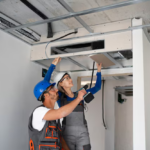If you’re looking to cut down on your energy bills while keeping your home comfortable, programmable thermostats might be the solution you need. These smart devices allow you to customize your heating and cooling schedules, ensuring efficiency without sacrificing comfort. Let’s dive into how they can help you save money and improve your energy usage.
1. Maximizing Energy Efficiency
Programmable thermostats are designed with energy efficiency in mind. By automatically adjusting the temperature based on your schedule, these devices can prevent unnecessary heating or cooling when you’re not home. For instance, you can set your thermostat to lower the heat during the day when everyone is at work or school, and program it to warm up again just before you return. This simple adjustment can lead to significant savings over time.
Moreover, the ability to program multiple schedules throughout the week allows you to optimize your energy usage further. Some models even let you tailor settings for individual rooms. This means you can keep commonly used areas comfortable without overworking your system. By utilizing these features, homeowners can see a marked reduction in their energy bills and enjoy a more efficient home.
2. Customizing Your Schedule
One of the standout features of programmable thermostats is their flexibility in scheduling. Each family has its own routine, and a programmable thermostat allows you to tailor the heating and cooling cycles to fit your lifestyle perfectly. Whether it’s an early riser needing warmth at dawn or a late sleeper preferring a cooler house in the morning, these devices can adapt to your needs effortlessly.
Additionally, most modern programmable thermostats come with user-friendly interfaces or smartphone apps, making it easy to input or change schedules on the fly. Suppose your plans change unexpectedly; you don’t have to worry about coming home to an uncomfortable temperature. With just a few taps on your phone, you can adjust your thermostat whether you’re at work or out for the day.
3. Reducing Waste with Smart Sensors
Smart sensors embedded in some programmable thermostats take energy efficiency to the next level. These sensors can detect when a room is occupied and adjust accordingly, ensuring that you’re not heating or cooling empty spaces. By only using energy when it’s truly needed, you can further decrease unnecessary costs on your utility bills.
For example, if you’re watching a movie in the living room, the thermostat can sense that the room is occupied and maintain a comfortable temperature, while reducing heating or cooling in other less-used rooms. This smart feature not only enhances comfort but also considerably optimizes energy consumption. When you consider how frequently rooms can go unused during the day, such technology can have a profound impact on your overall energy expenses.
4. Remote Control for Ultimate Convenience
Imagine the ease of controlling your home’s climate from anywhere at any time. Many programmable thermostats offer remote control capabilities, allowing you to manage temperature settings straight from your smartphone or tablet. Whether you’re at work, on a vacation, or simply out running errands, you have the power to adjust your thermostat with just a few taps.
This functionality not only enhances your comfort but can also lead to added energy savings. For instance, if you forgot to adjust the thermostat before leaving home, you can quickly log into the app and change the settings to avoid wasting energy while you’re away. The convenience of remote adjustments means you’re always in control, no matter where life takes you.
5. Adaptive Learning Features
The latest programmable thermostats now come equipped with adaptive learning features, making them even more intelligent and user-friendly. Such systems learn your habits over time, automatically adjusting based on your heating and cooling preferences. If you consistently lower the temperature at night, your thermostat will learn this pattern and make the adjustment on its own without needing to be told.
This ‘set it and forget it’ functionality is perfect for busy households. Instead of manually programming every change, your thermostat takes the proactive approach, optimizing energy use based on learned behavior. As a result, you’ll not only reap the financial benefits of reduced energy consumption but also enjoy enhanced convenience.
6. Integration with Smart Home Devices
Many homeowners today are looking for seamless integration with their smart home devices, and programmable thermostats fit the bill beautifully. They can work alongside other devices like smart speakers, lighting systems, and security cameras to create a comprehensive, energy-efficient ecosystem in your home. For instance, you can set routines where your thermostat adjusts the temperature when your smart lights turn on or your security system is activated.
This synergy not only adds convenience but also ensures that energy is used efficiently across your home. When all your devices work cohesively, you can create an environment that feels comfortable and welcoming without sacrificing energy efficiency. Smart homes are the way of the future, and integrating a programmable thermostat is an excellent step in that direction.
7. Long-Term Financial Benefits
Investing in a programmable thermostat is not just about immediate savings; it’s a journey towards long-term financial benefits. While the upfront cost may seem daunting, the energy savings you’ll accumulate over time more than justify this initial investment. Many users report reductions in their monthly energy bills by up to 15% or more after making the switch.
Moreover, the improvement in energy efficiency can contribute to the longevity of your heating and cooling systems. By preventing unnecessary strain on your HVAC units through smart temperature regulation, you can avoid costly repairs or premature replacements down the line. This means that, not only are you saving money on your current bills, but you’re also investing in the future usability and efficiency of your systems.




